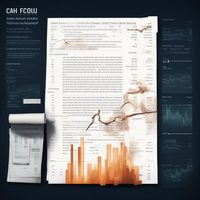Saving Accounts

Introduction
In the world of banking, saving accounts are one of the most common and popular types of financial products that individuals utilize. A saving account is a type of deposit account offered by banks and other financial institutions, designed to help customers save money for future use while earning some interest on their savings. This overview will provide a comprehensive understanding of saving accounts and their features.
Features of Saving Accounts
Saving accounts typically offer various attractive features to customers, making them an ideal choice for individuals who want to set aside funds for different purposes. Some key features include:
Liquidity: Saving accounts provide high liquidity, which means that customers can easily access their funds whenever needed without any significant restrictions or penalties.
Safety: Banks ensure the safety of deposits in saving accounts by providing insurance coverage through government-backed programs such as the Federal Deposit Insurance Corporation (FDIC) in the United States or similar entities in other countries.
Interest Earnings: One primary benefit is that saving accounts earn interest on deposited funds, allowing customers to grow their savings over time. The interest rates may vary depending on factors like bank policies, account balance, and prevailing market conditions.
Minimum Balance Requirement: Some banks may require customers to maintain a minimum balance in their saving accounts to avoid service charges or fees associated with low balances.
Deposits and Withdrawals: Customers can make deposits into their saving accounts either at bank branches or through electronic transfers from other bank accounts. Similarly, they can withdraw funds using various methods such as ATM withdrawals or electronic transfers.
Online Banking Services: Many banks also provide online banking services, enabling customers to manage their saving accounts conveniently from anywhere using internet-based platforms or mobile applications.
Account Statements: Customers receive regular statements detailing transactions made within their saving accounts, including deposits, withdrawals, interest earned, and fees charged (if any).
Benefits of Saving Accounts
Saving accounts offer several benefits to customers, making them an essential tool for financial planning and management. Some notable advantages include:
Security: Saving accounts provide a safe place for individuals to store their money while enjoying the peace of mind that comes with government-backed insurance coverage.
Interest Income: The interest earned on saving accounts provides a passive source of income for customers and helps combat the effects of inflation by maintaining the purchasing power of their savings over time.
Financial Discipline: By separating funds in a different account earmarked for savings, individuals can establish good financial habits and organize their finances more effectively.
Emergency Fund: Saving accounts serve as an ideal platform for building emergency funds, which can be readily accessed during unforeseen circumstances or emergencies without resorting to high-interest loans or credit cards.
Convenience: With online banking services and various access channels like ATMs, saving account holders can conveniently manage their funds anytime and anywhere at their convenience.
Conclusion
In conclusion, saving accounts are an important component in personal finance management. They offer individuals a secure place to save money while earning interest on their deposits. With attractive features such as liquidity, safety, interest earnings, and convenient banking services, saving accounts provide numerous benefits that make them invaluable tools for achieving financial goals. Whether it's building an emergency fund or simply growing one's savings over time, a saving account is an excellent choice for anyone seeking stability and long-term growth in their financial journey.
Sponsored
Sponsored
Sponsored
Explore More:

Operational Risk
Operational risk is the potential for loss resulting from inadequate or failed internal...

Market Risk
Risk management in banking is a critical aspect of the banking industry. Managing...

Credit Risk
Risk management in banking is a critical aspect of the banking industry. Managing...

Risk Management in Banking
Risk management in banking is a critical aspect of the banking industry. Managing...

Glass-Steagall Act
The Glass-Steagall Act, also known as the Banking Act of 1933, was an...

Dodd-Frank Act
The Dodd-Frank Act, officially known as the Dodd-Frank Wall Street Reform and Consumer...

Basel Accords
Banking regulations refer to the laws, rules, and guidelines imposed by regulatory authorities...

Banking Regulations
Banking regulations refer to the laws, rules, and guidelines imposed by regulatory authorities...

Cash Flow Statement
The cash flow statement is an important financial statement for banks as it...

Income Statement
The income statement is an essential component of a bank's financial statements. It...

Balance Sheet
The balance sheet is one of the most important financial statements used by...

Bank Financial Statements
Bank financial statements provide a comprehensive overview of a bank's financial performance and...

Online and Mobile Banking
In today's rapidly evolving technology landscape, the banking industry has undergone a significant...

Credit Cards
Credit cards are one of the most prominent banking products offered by financial...

Understanding Different Types of Bank Loans: Features and Benefits for Personal and Business Financing
Loans are a core offering of banking institutions, providing individuals and businesses with...

Checking Accounts
A checking account is one of the most common banking products used by...